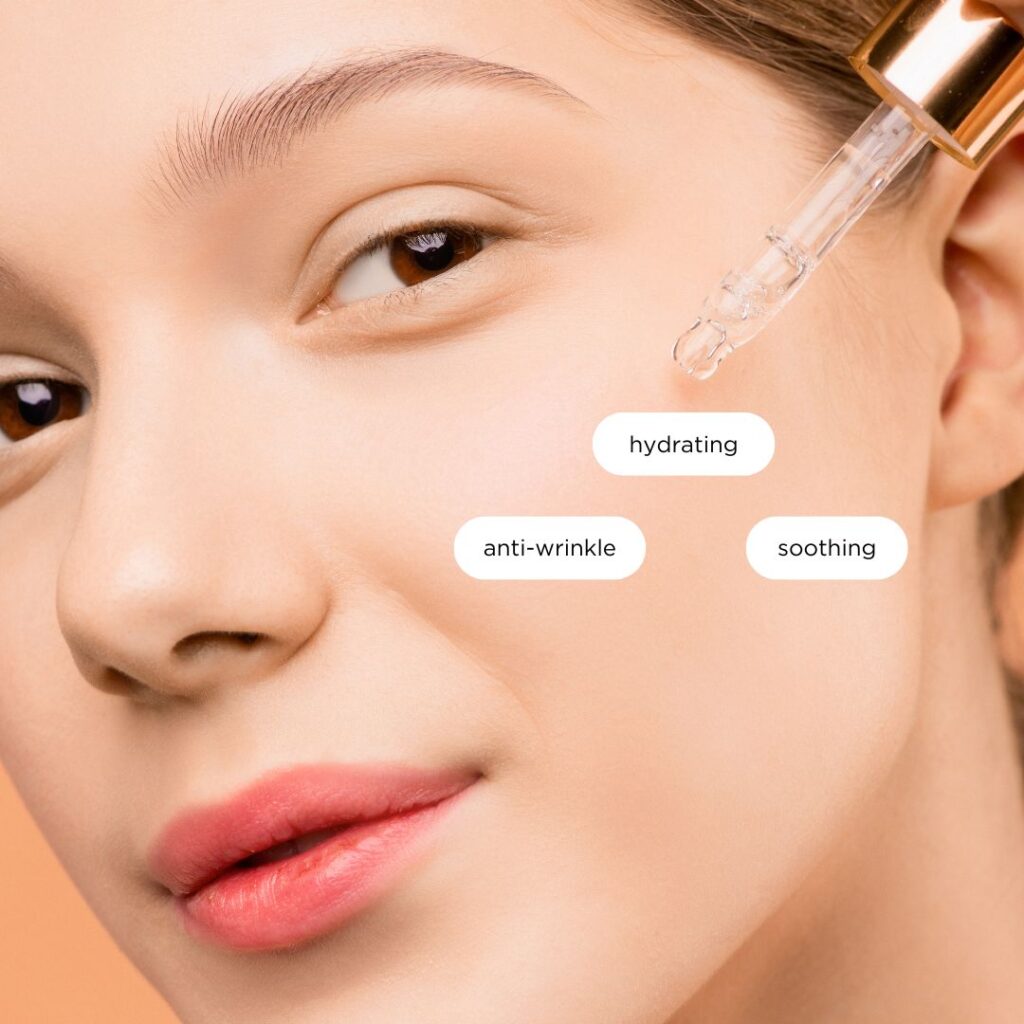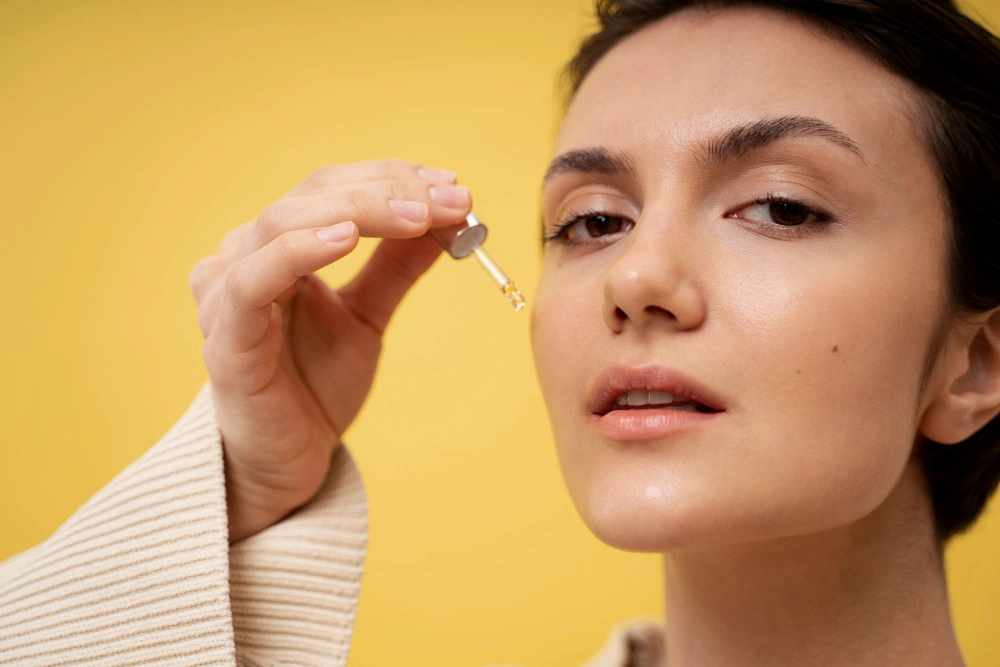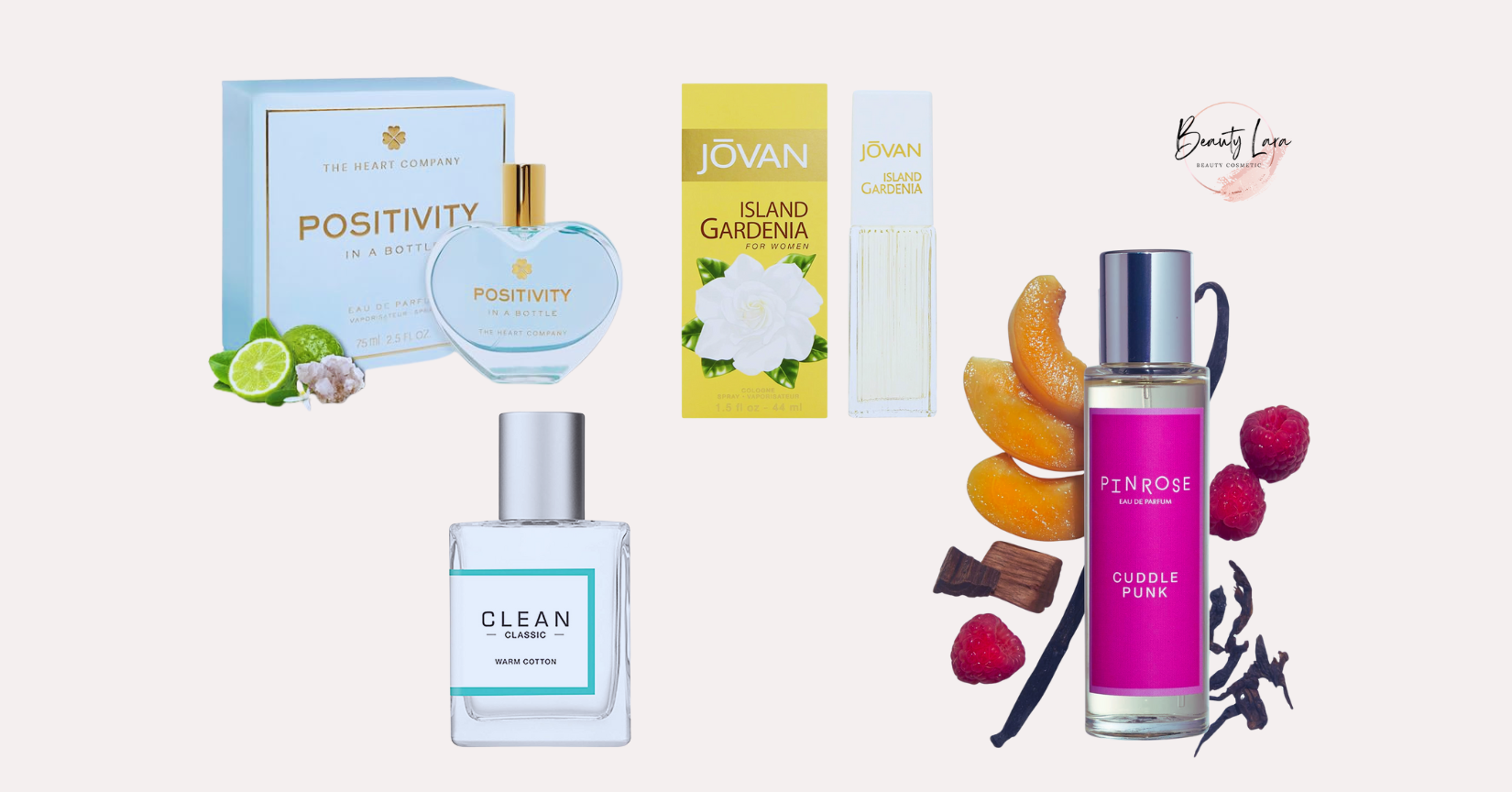Retinol is described as the most effective active ingredient for the skin and is said to reduce wrinkles, spots and hyperpigmentation. We have taken a closer look at the ingredient and have been using retinol serums ourselves for over three years. Here you can find all the Retinol Serum effects, side effects and our experiences with retinol.
The most important facts in brief
Retinol reduces spots, blackheads, acne and wrinkles
Provides smoother and more robust skin
Brightens hyperpigmentation and scars
What is retinol
Retinol is a form of retinoic acid (vitamin A) and plays an important role in cell division and renewal. When applied to the skin, retinol stimulates collagen formation and restores the skin’s appearance.

Retinol is one of the best-researched active ingredients in skin care, and its skin-image-reducing effects have been extensively confirmed in studies. It is therefore not without reason that retinol serum is the best anti-ageing serum among skincare enthusiasts. It is also recommended in stronger preparations by dermatologists to combat skin problems such as stubborn acne or scars.
Retinol Serum Effects
When you apply retinol to your skin, it transforms into pure retinoic acid. This ensures that the skin’s regeneration processes are stimulated and new and healthy skin cells are formed. As a result, retinol is very effective in several areas and combats several skin problems at the same time:
Retinol against wrinkles
A major advantage of retinol is that it stimulates the formation of collagen. This makes the skin firmer and more elastic. In the long term, it can reduce wrinkles and give the skin a younger appearance. Retinol is particularly effective against the rapid skin ageing process, which can begin in the mid-20s and during which collagen is broken down.
Retinol has an exfoliating effect
Retinol also has an exfoliating effect, which accelerates the skin’s own renewal process and removes dead skin cells. This makes the skin texture smoother and the complexion more radiant and rosy. It also helps to prevent the formation of blemishes and combat milia (benign small cysts under the epidermis).
Retinol against hyperpigmentation
Hyperpigmentation such as pigmentation spots, age spots and acne and pimple marks can be lightened more quickly thanks to the exfoliating effect and improved cell division of retinol and the skin’s appearance becomes more even in the long term.
Retinol against spots and acne
Retinol is a helpful active ingredient against blemishes and is also recommended by dermatologists for severe acne. The anti-inflammatory, sebum-regulating and exfoliating properties of retinol not only heal pimples, blackheads and acne more quickly, but also effectively prevent them.
Retinol has an antioxidant effect
Retinol also has an antioxidant effect. This means it fights free radicals in the environment that attack the skin. Antioxidants also help to prevent discoloration of sebum, which leads to blackheads, and ensure a radiant complexion.
Retinol refines pores
Thanks to the sebum-regulating effect of retinol, it can refine the size of pores and reduce and prevent blackheads.
Retinol ensures thicker skin
Regular use of retinol helps to make the skin thicker and therefore more resistant. This means that the skin is better protected against harmful external influences. In addition, thicker skin also promotes a smoother complexion.
Retinol increases skin regeneration
While you sleep at night, your body releases growth hormones, which are responsible for the renewal of skin cells and collagen. Retinol helps to promote this regeneration process and you wake up in the morning with a more refreshed complexion.
Retinol against scars
By promoting the formation of new skin cells and the exfoliating properties of retinol, scar tissue can heal better and the skin texture becomes smoother.
Retinol experience
I have been using retinol serums for over three years. This is my experience:
I had hesitated to use a retinol serum for a long time because I was put off by the strong effect and the fear of possible worsening of the skin. But I quickly realized that I could achieve very good results without any problems and retinol has now become my favourite active ingredient. I have been using it two to three times a week for three years.
The very next day after each retinol application, I notice that my skin has improved slightly. My skin looks more rested and my complexion looks more even.
For me, retinol works particularly well against my spots. My skin tends to leave stubborn pigmentation after a pimple that just won’t go away. Since integrating retinol into my skincare routine, the spots have faded much faster and my skin tone is more even.
I don’t have any severe wrinkles yet, but my fine lines are no longer as noticeable with regular use. My skin not only looks plumper, but also feels firmer and more resistant.

If I don’t use retinol for a longer period of time, I notice that I get blemishes more often and more stubbornly than usual. Retinol helps me to get pimples less often and that they heal faster.
I have also tested many different skincare products that have the above-mentioned effects, but for me nothing comes close to a retinol serum. It simply does so many things so effectively that I wouldn’t want to be without it and it has become an integral part of my skincare routine.
Retinol application
Follow these steps when using a retinol serum to achieve the best results and protect your skin:
How to Use Retinol for Optimal Results
Introducing retinol into your skincare routine can lead to transformative results, but it is crucial to approach its application with care to maximize benefits and minimize potential skin irritation. Here’s a more detailed guide to getting the most out of your retinol regimen:
- Start Slowly with Retinol: If you’re new to retinol, it’s important to allow your skin to acclimate. Begin by applying a retinol product once or twice a week, observing how your skin responds. Gradually, as your skin builds tolerance, you can increase usage to several nights a week. Consistency over months is key to see significant improvements in texture, tone, and the appearance of fine lines.
- Always Pair with SPF: Retinol can render your skin more prone to sun damage due to its sensitivity-increasing effects. Therefore, integrating a broad-spectrum sunscreen with an SPF of 30 or higher into your daily morning routine is imperative. Not only does this protect your skin, but it also enhances the anti-aging benefits of retinol by guarding against further photodamage.
- Optimal Evening Application: Your skin’s repair processes are most active at night, making it the best time to apply retinol serum. Use it in the evening before bedtime to allow the active ingredients to synergize with your skin’s natural renewal cycle. You’ll wake up with skin that feels rejuvenated and looks more radiant.
- A Little Goes a Long Way: It’s easy to overdo it, but you only need a pea-sized amount to cover the entire face. Using more won’t hasten results and may instead lead to irritation.
- Apply to the Right Canvas: For best absorption, retinol should be applied to freshly cleansed and slightly damp skin. This creates the perfect environment for the serum to penetrate deeply and work effectively.
- Include Neck and Décolleté: Extend the application beyond your face to include your neck and décolleté area – other parts of your body that often show signs of aging. Using gentle, upward strokes, massage the serum into your skin to encourage absorption and boost circulation.
- Soothe with Moisture: After allowing the retinol to absorb into your skin (wait about 20-30 minutes), follow up with a nourishing moisturizer. The ideal cream will contain ingredients that soothe and hydrate your skin, easing any potential irritation that the retinol might cause. Look for products with hyaluronic acid, ceramides, or niacinamide, which support the skin barrier and provide extra care.
By incorporating these steps into your skincare routine, you can more effectively harness the power of retinol and enjoy the full spectrum of its benefits. Remember, to see visible results, patience and persistence are essential, as well as a commitment to consistent care and protection of your skin.
Retinol side effects
The effect of retinol is not without side effects and can lead to skin aggravation if used incorrectly. The potential and extent of irritation depends on your skin and the concentration of the retinol serum. The most common side effects of retinol are as follows:
- Dryness
- Tightness
- Redness
- Sensitivity
- Scaling
- Blemishes
As a result, it is recommended to start slowly with a lower retinol concentration – such as CeraVe Retinol Serum. In addition, use a moisturizing and barrier-strengthening care product when using retinol to prevent and soothe irritation.
Retinol initial aggravation
If you are just starting to use retinol and have acne-prone skin, you may experience some initial aggravation. In other words, the skin is cleared of deep-seated blockages, which come to the surface more quickly and lead to more blemishes.
Instead of discontinuing the retinol serum, it is advisable to continue using it for the next few weeks and get through this phase. This will allow your skin to recover and get used to the retinol. Now you can enjoy the great benefits of retinol.
You should therefore allow for a settling-in period of a few weeks, during which you can expect side effects. In other words: make sure that you don’t have any important events on your schedule during this time, for example.
Retinol has a mild exfoliating effect and removes dead skin cells. This not only makes the skin more radiant, but unfortunately also more sensitive to UV radiation. To avoid damage from UV radiation, a daily sun cream for the face is a must.
Retinol concentration
Retinol is a powerful active ingredient that provides the desired improvement in skin appearance even at low concentrations. Depending on the concentration, the results of retinol can be faster or stronger, but the risk of side effects increases at the same time.
0.01 % to 0.05 % Retinol
This is a very low concentration of retinol that is particularly suitable for very sensitive skin as well as for daily use.
0.05 % to 0.1 % Retinol
A low dosage of up to 0.1 percent is suitable for retinol beginners and sensitive skin. Slight improvements in skin structure and skin tone as well as increased collagen formation can be seen with weekly use.
0.3 % to 1.0 % Retinol
To better combat severe signs of skin ageing and pigmentation, you can use a higher concentration of retinol. The maximum concentration of retinol that is available over the counter is up to 1 percent. A higher dosage offers significantly more irritation and is only available through a dermatologist.
Alternatively, you can also use retinol derivatives, which are weakened forms of retinol. They are therefore much gentler on the skin and not as strong as the pure form.
You can also use the next level of retinol – retinal. It converts much faster into retinoic acid, which makes it more effective than retinol, but can also lead to side effects. This is why retinal is only available over the counter up to 0.1 percent.
Conclusion
Retinol is a real power ingredient and combats several skin problems at the same time – no wonder a retinol serum is a must-have for skincare enthusiasts.
Retinol gives you a plumper, smoother and more even complexion and we have also noticed these effects with regular use. With the right retinol serum, you too can reduce wrinkles, acne and pigmentation spots and are ideally equipped for slow ageing.







